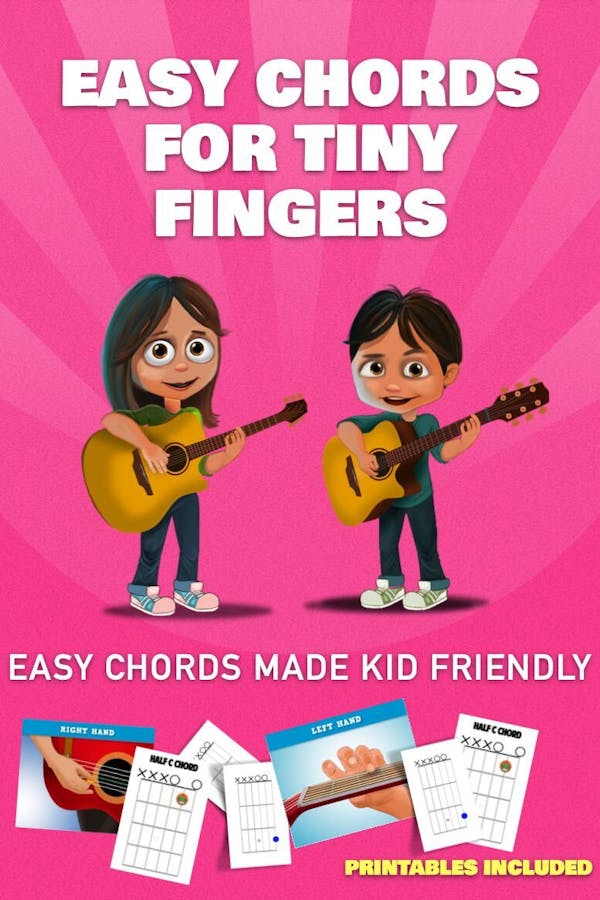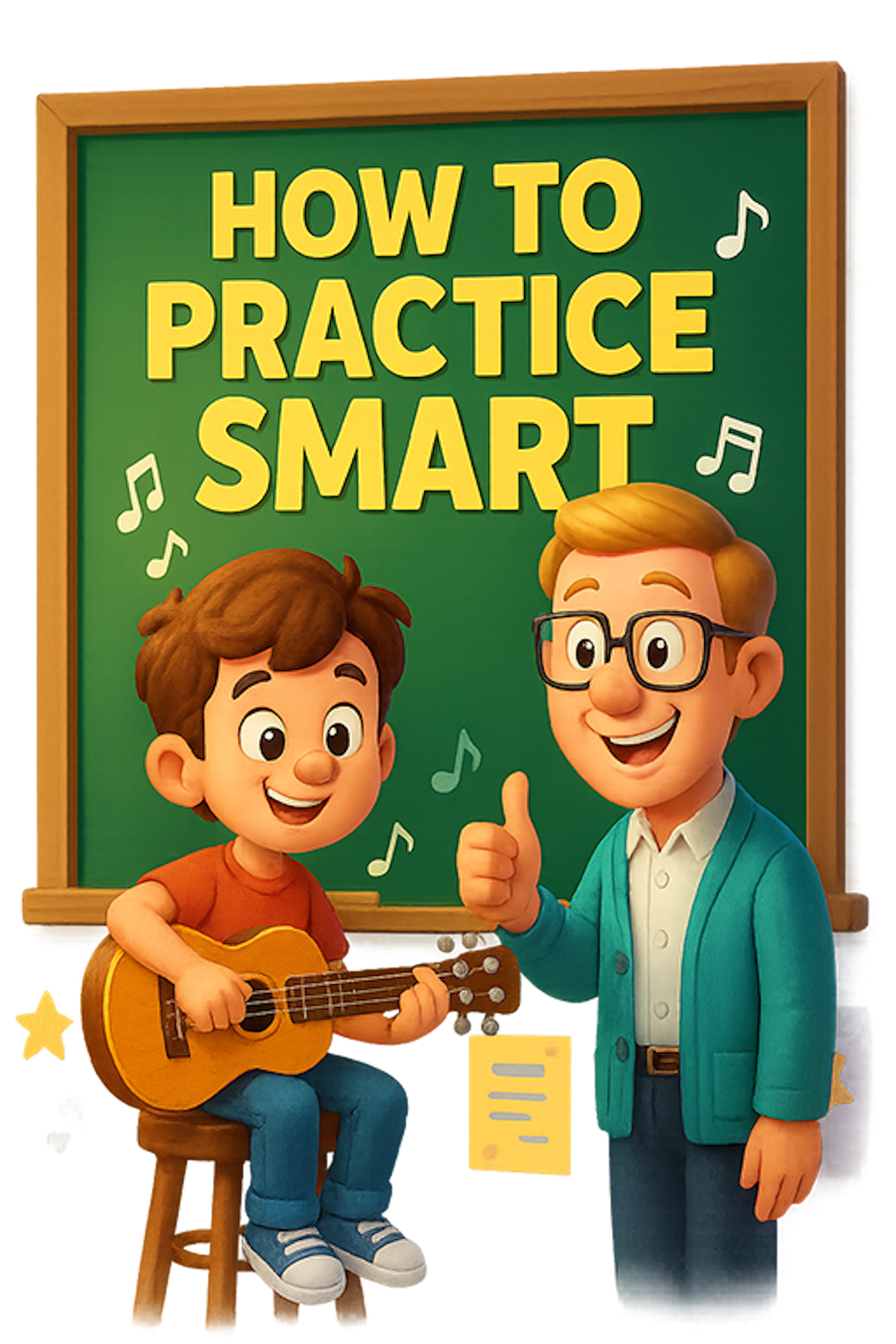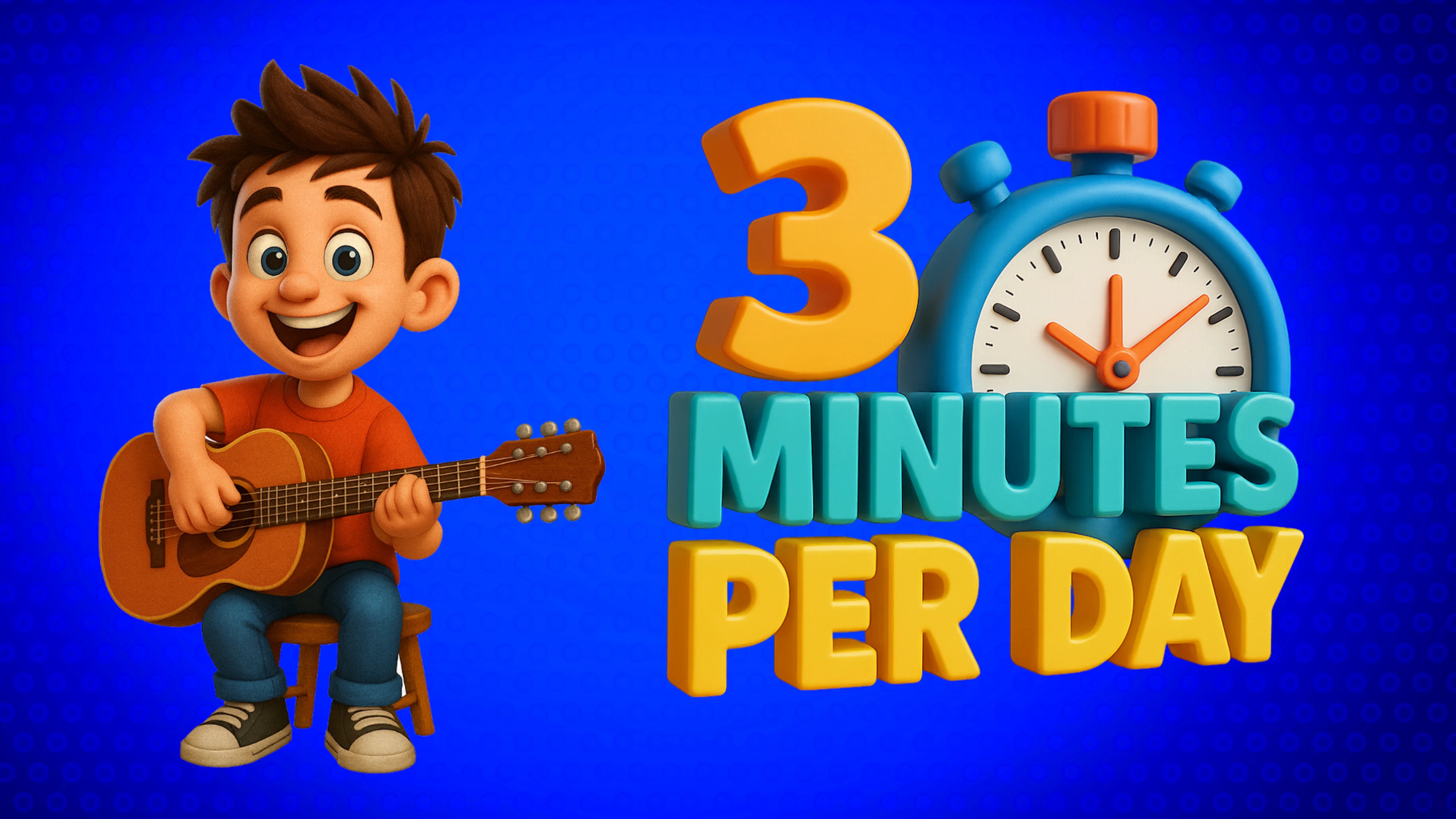Fun and Easy Ways to Teach A Child Guitar Chords
Discover fun and easy ways to teach kids guitar chords! Perfect for beginners, this guide offers tips like starting with half chords,and playing along with backing tracks to make learning enjoyable and effective for children as young as 5yrs of age

Teaching a child to play guitar can be an exciting and rewarding journey, but it’s not without its challenges. One of the first hurdles for beginners, especially young learners, is understanding chord diagrams (commonly referred to as "chord stamps"). These visual aids are essential for learning chords, but they can sometimes be confusing—especially when viewed from the perspective of a child looking down at their guitar.
Let’s dive into what chord stamps are, how they traditionally look, and how they might be reimagined to make learning easier for kids. This foundational understanding will also help parents better support their child’s musical journey.
What Are Chord Stamps?
Chord stamps are visual representations of guitar chords. They show the fretboard as if you’re looking at it head-on, with the vertical lines representing the strings and the horizontal lines representing the frets. Dots or circles indicate where to place your fingers, and numbers may be included to show which fingers to use.
Traditional Chord Stamp
Here is a C chord - A vertical perspective
Traditionally, chord stamps are presented in a way that assumes the learner understands this perspective.
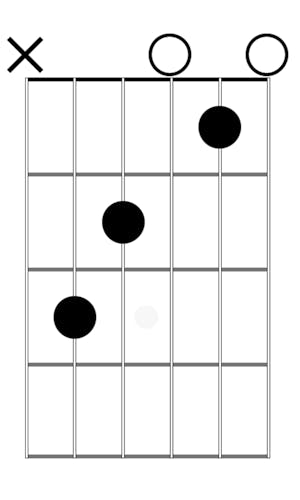
However, for young beginners (and even some adults), this can be counterintuitive. When a child looks down at their guitar while holding it, their view of the fretboard is different from what’s shown in a traditional chord stamp. This discrepancy can lead to confusion.
Watch the video below for an easy explanation of chord stamps:
The Student’s Perspective: Why It Can Be Confusing
The image below illustrates what a student sees when they look down at their guitar. Notice how their view of the fretboard is horizontal rather than vertical, as shown in traditional chord stamps.

For a beginner, this difference in orientation can make it harder to connect the diagram with what they see on their instrument.This is where visual aids tailored to the student’s perspective can make a big difference. By tilting a chord stamp on its left side, it aligns more closely with how the fretboard appears when looking down at it. This adjustment could bridge the gap between theory and practice for young learners.

This is not to say you will always see chord stamps tilted on its side, this is merely a way for the student to get some orientation, a way understanding the vertical representation verse the horizontal interpretation.
Don't forget the objective is to learn the open C chord shape and memorise it as quickly as possible and get down to some strumming!
KNOWING YOUR OPEN STRING NAMES
It's also important to learn the open strings and understanding which is the 6th E string and which is the 1st E string.
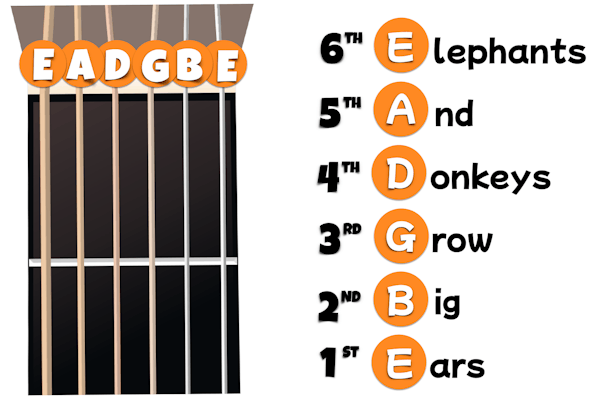
Now once you understand what a chord stamp is its time to start playing, but for kids as young as 5 years of age full chords can be quite a challenge.
To overcome this start on half chords ..
Half Chords A Great Starting Point
For young learners, starting with “half chords” using the top three strings can be a fantastic approach. These simplified chords are easier for little fingers to manage and a great way to build confidence. The right hand strums from the G string and the only 1 finger is needed from the left hand. They can expand on these later and learn full chords.

The image above is a chord stamp laid on its side like an arial view looking down at the guitar.
Backing Tracks - Grooving with Rhythm
Introduce your child to the wonderful world of rhythm by using fun backing tracks. These tracks offer simple strums with only two chords, which encourages playing in time from the outset. Understanding timing and counting bars is a crucial building block for any musical instrument.
The following strumming exercise is played to a backing track over 2 bars. There are 4 beats in each bar. The green pick indicates to strum down on that beat. Beat 3 is a half note ( not coloured in pick ) – this note lasts for 2 counts.

LESSON WITH BACKING TRACK
Nursery Rhyme Jams - Strum and Sing Along
Utilise familiar nursery rhymes and songs, such as “Mary Had A Little Lamb” to make chord practice more enjoyable. As long as chords are kept simple (only two required in this example), this method encourages singing as you strum. It’s a great way for kids to discover how chords and rhythm provide backing for a melodic instrument such as the voice.
Lyric Sheet With Chords
Here’s the lyric sheet with chords above the words, this is ok for more experienced players but not great for counting beats and bars.

Chord Chart
This is a chord chart which indicates when to strum. Most music is in whats called four four time. You will notice the 2 number fours stacked at the eginning of the music. This tells us there are 4 beats in each measure or bar. Just strum down on each beat.
In this example Some beats lasts 2 beats and some for 4 beats.

Chord Chart With Words
This is a chord chart however this time we have added the lyrics as well. Notice how some words are split in half to accomodate the rhythm. If your still struggling with rhythm or understanding what beatts and bars take a FREE look at our introductory lessons here

Visual Aids
Kids are visual learners, so colorful chord charts and posters can be their best friends. Hang these visual aids in their practice area, making it easier for them to reference and practice chords.
Creative Chord Names
Give chords fun and imaginative names to make them more relatable. For example, turn G major into “Ghost” and C major into “Caterpillar.” This not only makes chords easier to remember but also adds a touch of playfulness to their practice.
Teaching your child guitar chords should be a delightful experience for both of you. These fun and easy methods not only make the learning process enjoyable but also create lasting memories. Whether it’s playing along to the backing tracks to groove with rhythm, or strumming along to nursery rhymes, you’re nurturing their love for music and opening the door to a world of creative possibilities.
DOWNLOAD OUR FREE PRINTABLE PDF BOOK
If you are you looking for additional resources to help your child learn guitar chords with ease, We have just the thing for you! “Easy Chords For Tiny Fingers,” designed to make chord learning kid-friendly. This ebook includes easy-to-follow lessons and fun printables, all aimed at nurturing your child’s passion for music. The first half of book is in full colour; Remember to print out pages 21-31 for Black and White
Ready to Start Your Guitar Dojo Journey?
